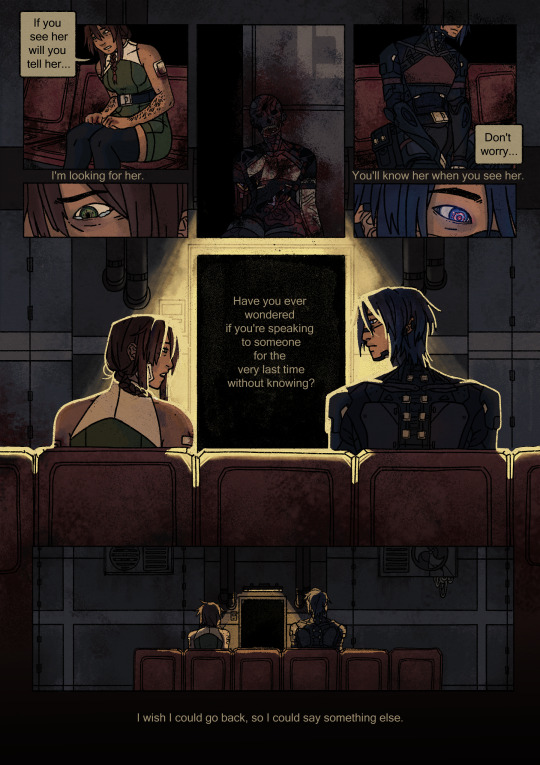#A system of hope
Text
Breaking down the Comics: Writing a legend, building a history.
Today we aren't reviewing an issue of Moon Knight. Today we are going to talk about something important.
So who wrote Moon Knight?
"Easy!", you might say. "Doug Moench!"
Sure. But you'd be surprised to find that it's not as much as you'd think.
Doug Moench wrote issues 1-15, 17-26, 28-33.
He returns in 1998 for a 4 issue mini seires Vol 3 "Resurrection Wars" which revives Marc Spector, who had been killed off in the previous volume.
He continues in 1999 with Vol 4, another 4 issue mini series "High Strangers/Strangeness" which won an award for favorite limited series.
He also wrote werewolf by Night, which gave us the first iteration of Moon Knight. An instantly popular character that made appearances in other comics like "The Hulk" before he was given his own comic.
He had time to work on the designs with Bill Sienkiewicz. They built up the weapons, the costume, the cab, and the copter.
He also built up the side characters of Gena, Gena's two boys, Crawley, Frenchie, Detective Flint, and Marlene.
He set the ground rules:
Moon Knight system is Jewish.
Marc, Jake, and Steven are a part of a system and are not one man pretending to be someone else
Jake is the one that is friendly and loves being with the people.
Steven is posh, collected, and takes care of things.
Marc is the one with experience, has the skills needed to get things done, and holds all the pain.
They are former Mercenaries who did terrible things and have deep guilt.
Khonshu resurrected them to act as Moon Knight
They strive to protect any who would come to them for help that perhaps might not get it elsewhere
I would even argue that he was building up to the fact that Moon Knight himself was his own form of alter but it has since been glossed over and replaced with the idea that Marc is most often the one under the mask.
Pretty simple rules to follow to make it a Moon Knight comics, but you'd be surprised what some writers have done with it.
These comics were written long before DID was acknowledged and the different forms of PTSD and Dissociation were defined.
And yet, here we stand with a traumazied man from Chicago slowly working through a freshly cognizant system and trying to figure out how three (four) people can work together towards not just a life, but life as a superhero who wants to help people.
Further more, an odd thing happened in this.
We had a comic that often focused more on mental health than on super powers, heroics, or villains.
More often than not, we watched Marc, Jake, and Steven struggle with themselves and one another. We watched stories unfold from the villain's point of view, often just being ordinary people pushed too far by a system that failed them.
More so, we watched Moon Knight sympathise with these villains.
How often he let them walk away or he let them kill their abusers, wondering if he was doing wrong himself.
How can he help when sometimes the help he offers is not what is needed?
We even watched him fail. We saw him lose his temper and cause damage. We saw him curl into a ball and break. We saw him get lost in his own nightmares and dissociative fuges.
Moench stepped forward and often handled current events with raw emotion. We saw his characters cry over the loss of public iconic figures. We watched people struggling as they returned from war. We saw child abuse and poverty. We watched economic struggles with classism and we watched people struggle to deal with grief.
We even watched them deal with antisemitism over and over again. How many times were the victims of his stories Jewish and trying to survive in America? What about the story that took place with the mass shooting in the Synagoug? We heard stories of Generational trauma as elders struggled with survival after the Holocaust.
Moon Knight was a unique comic unlike any other I've ever come across. For it's time and for it's topics at the time. What's more, this comic continued.
It was no 'special of the week' comic and spanned multiple years as they grew.
What do we know about Moench? Who did he write this comic for?
The Moon Knight in the Were Wolf by Night certainly didn't have all this depth. He was just a man dressed in silver, fighting a monster and ultimately choosing the side of the monster.
Moench himself was from Chicago. He knew what it was like to live in the city and see the fall of factories and hard times on the streets. We know he witnessed the times of Vietnam veterans being forgotten and abused. He witnessed a lot of changes happening in the world and the places he was writing about.
He wrote about what spoke to him and what he saw around him.
And in his stories, there often were no clear heroes, winners, or villains.
But there was one issue that he chose to add into this comic that was already filled with so many things that other comics avoided.
Moon Knight wasn't written as Jewish in that one shot cameo. He wasn't written with DID either, but I'll get to that.
There are interviews of Doug admitting that "I didn't say, 'I'm going to sit down and create a Jewish character.'"
In fact, he picked a name and later found out it was a Jewish name. This made him do research. Not just into Judaism, but into the areas that Marc Spector fought in and where his family came from.
Do you have any idea how many writers of that time and our current time simply slap the label of "Jewish" on a character and refuse to actually look into what makes them Jewish?
I can't say how much he researched and how much he got wrong or right, but I do know that when he did choose to dive into topics that touched on certain issues, he handled them with a grace that is often overlooked.
The writer that came after Moench? Alan Zelenetz, a former Jewish day school principal from Brooklyn.
Zelenetz had been acting as an editor for a bit before he took a look at Moench's early start.
And it was in Issue 37 and 38 where we get the real backstory of Marc Spector. A man running from his Rabbi father.
Marc now became the son of an Orthodox Rabbi who had been forced to flee Czechoslovakia after the Nazi invasion.
Here, we get the story of Marc running to the Marines. Running to the mercenaries, and running from home. Perhaps even, running from G-d.
Zelenetz wanted to lean into the Jewish past and Jewish story. He explored themes of using a holy book to create a villain while playing with Jewish myths. He also explored Antisemitism without toning it down or hiding it under comic bookish villainy. He portrayed Moon Knight facing white supremacist vandalizing a Jewish Cemetery. He showed Moon Knight saving the Torah from a Synagogue fire. He also showed a strained relationship and the question of Moon Knight finding his own relationship in what he does with his father's views.
Alan Zelenetz edited/wrote shorts for issues 18, 21–22, 27, 32, Then wrote the whole story for issues 36–38.
Zelenetz voiced that he was looking to add some Jewish representation into his workforce and perhaps into the comic industry at the time. Considering his background, perhaps he was the only one at the time that had the proper knowledge to play with things the way that he did in the story of Elias Spector's death and Marc Spector's pain.
He did not stick around with Moon Knight for long after. Though, he admits that he wanted to play with the fact that Khonshu was an Egyptian god and Marc was from such a Jewish background. I am sad we didn't get to see that story.
After that, Moon Knight's original 1980s run was finished. The question of what to do with Moon Knight, where to take him, and who would take up the mantle of writing him now lay in the hands of Marvel.
Many failed after this. They failed to keep the heart of what Moon Knight stood for and who Moon Knight was. His Jewishness was forgotten and his mental health became a joke.
Not to say all of them failed. There are a few shining stars that gleamed in the darkness and I like to think that it was these moments that kept Moon Knight going all these years.
Moench didn't set out to write a story about mental health, and yet his approach is the most real I've seen. Hardly a shining picture of perfect representation, there is still something there in watching the character almost seem to push back against the unintended desire to push him into a corner.
No matter how often Jake and Steven and Moon Knight were seen as Marc pretending to be someone else, there was always ALWAYS that correction. Always that push back.
Call it the writer's curse of characters misbehaving and taking on a life of their own, but perhaps there was something more there. Perhaps he felt the weight of time and cry of the suppressed and overlooked.
So many of his stories danced the line of "I can't say it because it will get edited out by the big wigs at Marvel, but if you would just look... Just look over here for just a moment..."
And years upon years later, a writer did see the whispers there and said "I see the story of pain. I see the cry of mental health." Lemire told the story that Moench couldn't and from that, we are still pushing forward with McKay.
And more, perhaps we will see the Jewish story that hides in all that also get a spotlight again.
In the era of big battles, cross-over events, explosions, and super villains cackling about domination... I still look back at Stained Glass Scarlet, The Druid, the Music Box, And Colloquy.
As I finish the original 1980s run, I brace myself to dive into what comes next.
I think I'm trying to find where and how the original run ventured so far into the dark and insulting territory it did and the journey back into a revival that now means so much to so many.
In a way, perhaps it mirrors a journey into our own mental health. How easy it is to become lost in what everyone around you tells you that you are and how you are supposed to be until your own doubt sets in to drown you. Perhaps it is the journey of Moon Knight's character emerging from this to find a path to healing that is what kept us here so long.
#Moon Knight#Moon Knight comics#Analyzing the comics#Marc Spector#Jake Lockley#Steven Grant#Doug Moench#Moon Knight is Jewish#Moon Knight has DID#A system of hope#I'm rambling again#But this is important to me
118 notes
·
View notes
Text
[...] During the early stages of the war, the army gave sweeping approval for officers to adopt Lavender’s kill lists, with no requirement to thoroughly check why the machine made those choices or to examine the raw intelligence data on which they were based. One source stated that human personnel often served only as a “rubber stamp” for the machine’s decisions, adding that, normally, they would personally devote only about “20 seconds” to each target before authorizing a bombing — just to make sure the Lavender-marked target is male. This was despite knowing that the system makes what are regarded as “errors” in approximately 10 percent of cases, and is known to occasionally mark individuals who have merely a loose connection to militant groups, or no connection at all.
Moreover, the Israeli army systematically attacked the targeted individuals while they were in their homes — usually at night while their whole families were present — rather than during the course of military activity. According to the sources, this was because, from what they regarded as an intelligence standpoint, it was easier to locate the individuals in their private houses. Additional automated systems, including one called “Where’s Daddy?” also revealed here for the first time, were used specifically to track the targeted individuals and carry out bombings when they had entered their family’s residences.
In case you didn't catch that: the IOF made an automated system that intentionally marks entire families as targets for bombings, and then they called it "Where's Daddy."
Like what is there even to say anymore? It's so depraved you almost think you have to be misreading it...
“We were not interested in killing [Hamas] operatives only when they were in a military building or engaged in a military activity,” A., an intelligence officer, told +972 and Local Call. “On the contrary, the IDF bombed them in homes without hesitation, as a first option. It’s much easier to bomb a family’s home. The system is built to look for them in these situations.”
The Lavender machine joins another AI system, “The Gospel,” about which information was revealed in a previous investigation by +972 and Local Call in November 2023, as well as in the Israeli military’s own publications. A fundamental difference between the two systems is in the definition of the target: whereas The Gospel marks buildings and structures that the army claims militants operate from, Lavender marks people — and puts them on a kill list.
In addition, according to the sources, when it came to targeting alleged junior militants marked by Lavender, the army preferred to only use unguided missiles, commonly known as “dumb” bombs (in contrast to “smart” precision bombs), which can destroy entire buildings on top of their occupants and cause significant casualties. “You don’t want to waste expensive bombs on unimportant people — it’s very expensive for the country and there’s a shortage [of those bombs],” said C., one of the intelligence officers. Another source said that they had personally authorized the bombing of “hundreds” of private homes of alleged junior operatives marked by Lavender, with many of these attacks killing civilians and entire families as “collateral damage.”
In an unprecedented move, according to two of the sources, the army also decided during the first weeks of the war that, for every junior Hamas operative that Lavender marked, it was permissible to kill up to 15 or 20 civilians; in the past, the military did not authorize any “collateral damage” during assassinations of low-ranking militants. The sources added that, in the event that the target was a senior Hamas official with the rank of battalion or brigade commander, the army on several occasions authorized the killing of more than 100 civilians in the assassination of a single commander.
. . . continues on +972 Magazine (3 Apr 2024)
#free palestine#palestine#gaza#israel#ai warfare#this is only an excerpt i hope you'll at least skim through the rest of the piece#there's an entire section on the 'where's daddy' system#(seriously just typing the name out feels revolting)
3K notes
·
View notes
Text
being aromantic is like. hey btw you're going to live a life that is the culmination of most of society's worst nightmares. sorry lol ✌️ but then you turn around and take a really good hard look at it and it turns out that living in that nightmare is fucking awesome and you get to wake up every day and take that fear that other people have and laugh and hold it close until it's a great joy for you instead. and being happy is a radical act that you define instead of someone else. and you're sexy as fuck that's just a fact of life i don't make the rules on that one
#aromantic people are just sexy i'm not making the decisions here it's just facts#course ur hot as fuck. it came free with the aromanticism#being sexy is just default settings for aromantic people 👍#hope this all helps. anyway i'm on my 'i hope i die alone <3 i can't wait to die alone <3' kick rn#i think the existential fear that people have of Not Partnering specifically is so. well.#obviously that shit is strong and it is SO awesome to be free of it.#realizing you're aro and you don't Want a partner can be such a hit to the solar plexus#cause society says that's the only thing that'll make you happy. so either you go without that thing or you force yourself#into doing something you don't want which would make you unhappy anyway.#so you think it's a lose lose situation and you have to come to terms with what amatonormativity presents as the worst possible situation#but then! whoa! turns out personhood is inherently valuable in and of itself and romantic partnering is just a construct!#and that nightmare is now your life to do with as you please... define as you will... structure as you want...#best case scenario. is what i'm saying.#every day i wake up ready to spit all that amatonormative rhetoric back in life's teeth by being alone and being happy#and it's so fucking satisfying. every day.#fucking JUBILANT being by myself. and i love being a living breathing 'fuck you' to the romantic system#you need a partner to be happy? oh that's sooo fucking crazy guess i'll go be miserable then. in my perfect fucking dream life lmao#yeah obviously it's the worst possible outcome on earth to die without a partner. so terrible. can't wait for it :)#aromantic#aromanticism#aro positivity#aroace#arospec#sorry to bitches who are sad about not having a partner. i could not give a fuck though get better soon#you couldn't EVER pay me enough to go back to a mindset in which my inherent value wasn't enough by myself.#FUCK that shit. absolutely miserable and a bad life outlook in general. like genuinely do the work w/ amatonormativity and get better#life is something that can be so fulfilling whether someone wants to kiss you or whatever or not#i'm on antidepressants and i have people i care deeply about. what the fuck would i need a partner for lmao
8K notes
·
View notes
Text

Story from the Washington Post here, non-paywall version here.
Washington Post stop blocking linksharing and shit challenge.
"The young woman was catatonic, stuck at the nurses’ station — unmoving, unblinking and unknowing of where or who she was.
Her name was April Burrell.
Before she became a patient, April had been an outgoing, straight-A student majoring in accounting at the University of Maryland Eastern Shore. But after a traumatic event when she was 21, April suddenly developed psychosis and became lost in a constant state of visual and auditory hallucinations. The former high school valedictorian could no longer communicate, bathe or take care of herself.
April was diagnosed with a severe form of schizophrenia, an often devastating mental illness that affects approximately 1 percent of the global population and can drastically impair how patients behave and perceive reality.
“She was the first person I ever saw as a patient,” said Sander Markx, director of precision psychiatry at Columbia University, who was still a medical student in 2000 when he first encountered April. “She is, to this day, the sickest patient I’ve ever seen.” ...
It would be nearly two decades before their paths crossed again. But in 2018, another chance encounter led to several medical discoveries...
Markx and his colleagues discovered that although April’s illness was clinically indistinguishable from schizophrenia, she also had lupus, an underlying and treatable autoimmune condition that was attacking her brain.
After months of targeted treatments [for lupus] — and more than two decades trapped in her mind — April woke up.
The awakening of April — and the successful treatment of other people with similar conditions — now stand to transform care for some of psychiatry’s sickest patients, many of whom are languishing in mental institutions.
Researchers working with the New York state mental health-care system have identified about 200 patients with autoimmune diseases, some institutionalized for years, who may be helped by the discovery.
And scientists around the world, including Germany and Britain, are conducting similar research, finding that underlying autoimmune and inflammatory processes may be more common in patients with a variety of psychiatric syndromes than previously believed.
Although the current research probably will help only a small subset of patients, the impact of the work is already beginning to reshape the practice of psychiatry and the way many cases of mental illness are diagnosed and treated.
“These are the forgotten souls,” said Markx. “We’re not just improving the lives of these people, but we’re bringing them back from a place that I didn’t think they could come back from.” ...
Waking up after two decades
The medical team set to work counteracting April’s rampaging immune system and started April on an intensive immunotherapy treatment for neuropsychiatric lupus...
The regimen is grueling, requiring a month-long break between each of the six rounds to allow the immune system to recover. But April started showing signs of improvement almost immediately...
A joyful reunion
“I’ve always wanted my sister to get back to who she was,” Guy Burrell said.
In 2020, April was deemed mentally competent to discharge herself from the psychiatric hospital where she had lived for nearly two decades, and she moved to a rehabilitation center...
Because of visiting restrictions related to covid, the family’s face-to-face reunion with April was delayed until last year. April’s brother, sister-in-law and their kids were finally able to visit her at a rehabilitation center, and the occasion was tearful and joyous.
“When she came in there, you would’ve thought she was a brand-new person,” Guy Burrell said. “She knew all of us, remembered different stuff from back when she was a child.” ...
The family felt as if they’d witnessed a miracle.
“She was hugging me, she was holding my hand,” Guy Burrell said. “You might as well have thrown a parade because we were so happy, because we hadn’t seen her like that in, like, forever.”
“It was like she came home,” Markx said. “We never thought that was possible.”
...After April’s unexpected recovery, the medical team put out an alert to the hospital system to identify any patients with antibody markers for autoimmune disease. A few months later, Anca Askanase, a rheumatologist and director of the Columbia Lupus Center,who had been on April’s treatment team, approached Markx. “I think we found our girl,” she said.
Bringing back Devine
When Devine Cruz was 9, she began to hear voices. At first, the voices fought with one another. But as she grew older, the voices would talk about her, [and over the years, things got worse].
For more than a decade, the young woman moved in and out of hospitals for treatment. Her symptoms included visual and auditory hallucinations, as well as delusions that prevented her from living a normal life.
Devine was eventually diagnosed with schizoaffective disorder, which can result in symptoms of both schizophrenia and bipolar disorder. She also was diagnosed with intellectual disability.
She was on a laundry list of drugs — two antipsychotic medications, lithium, clonazepam, Ativan and benztropine — that came with a litany of side effects but didn’t resolve all her symptoms...
She also had lupus, which she had been diagnosed with when she was about 14, although doctors had never made a connection between the disease and her mental health...
Last August, the medical team prescribed monthly immunosuppressive infusions of corticosteroids and chemotherapy drugs, a regime similar to what April had been given a few years prior. By October, there were already dramatic signs of improvement.
“She was like ‘Yeah, I gotta go,’” Markx said. “‘Like, I’ve been missing out.’”
After several treatments, Devine began developing awareness that the voices in her head were different from real voices, a sign that she was reconnecting with reality. She finished her sixth and final round of infusions in January.
In March, she was well enough to meet with a reporter. “I feel like I’m already better,” Devine said during a conversation in Markx’s office at the New York State Psychiatric Institute, where she was treated. “I feel myself being a person that I was supposed to be my whole entire life.” ...
Her recovery is remarkable for several reasons, her doctors said. The voices and visions have stopped. And she no longer meets the diagnostic criteria for either schizoaffective disorder or intellectual disability, Markx said...
Today, Devine lives with her mother and is leading a more active and engaged life. She helps her mother cook, goes to the grocery store and navigates public transportation to keep her appointments. She is even babysitting her siblings’ young children — listening to music, taking them to the park or watching “Frozen 2” — responsibilities her family never would have entrusted her with before her recovery.
Expanding the search for more patients
While it is likely that only a subset of people diagnosed with schizophrenia and psychotic disorders have an underlying autoimmune condition, Markx and other doctors believe there are probably many more patients whose psychiatric conditions are caused or exacerbated by autoimmune issues...
The cases of April and Devine also helped inspire the development of the SNF Center for Precision Psychiatry and Mental Health at Columbia, which was named for the Stavros Niarchos Foundation, which awarded it a $75 million grant in April. The goal of the center is to develop new treatments based on specific genetic and autoimmune causes of psychiatric illness, said Joseph Gogos, co-director of the SNF Center.
Markx said he has begun care and treatment on about 40 patients since the SNF Center opened. The SNF Center is working with the New York State Office of Mental Health, which oversees one of the largest public mental health systems in America, to conduct whole genome sequencing and autoimmunity screening on inpatients at long-term facilities.
For “the most disabled, the sickest of the sick, even if we can help just a small fraction of them, by doing these detailed analyses, that’s worth something,” said Thomas Smith, chief medical officer for the New York State Office of Mental Health. “You’re helping save someone’s life, get them out of the hospital, have them live in the community, go home.”
Discussions are underway to extend the search to the 20,000 outpatients in the New York state system as well. Serious psychiatric disorders, like schizophrenia, are more likely to be undertreated in underprivileged groups. And autoimmune disorders like lupus disproportionately affect women and people of color with more severity.
Changing psychiatric care
How many people ultimately will be helped by the research remains a subject of debate in the scientific community. But the research has spurred excitement about the potential to better understand what is going on in the brain during serious mental illness...
Emerging research has implicated inflammation and immunological dysfunction as potential players in a variety of neuropsychiatric conditions, including schizophrenia, depression and autism.
“It opens new treatment possibilities to patients that used to be treated very differently,” said Ludger Tebartz van Elst, a professor of psychiatry and psychotherapy at University Medical Clinic Freiburg in Germany.
In one study, published last year in Molecular Psychiatry, Tebartz van Elst and his colleagues identified 91 psychiatric patients with suspected autoimmune diseases, and reported that immunotherapies benefited the majority of them.
Belinda Lennox, head of the psychiatry department at the University of Oxford, is enrolling patients in clinical trials to test the effectiveness of immunotherapy for autoimmune psychosis patients.
As a result of the research, screenings for immunological markers in psychotic patients are already routine in Germany, where psychiatrists regularly collect samples from cerebrospinal fluid.
Markx is also doing similar screening with his patients. He believes highly sensitive and inexpensive blood tests to detect different antibodies should become part of the standard screening protocol for psychosis.
Also on the horizon: more targeted immunotherapy rather than current “sledgehammer approaches” that suppress the immune system on a broad level, said George Yancopoulos, the co-founder and president of the pharmaceutical company Regeneron.
“I think we’re at the dawn of a new era. This is just the beginning,” said Yancopoulos."
-via The Washington Post, June 1, 2023
#mental illness#schizophrenia#schizoaffective#psychotic disorders#psychology#neurology#autoimmune#autoimmine disease#neuroscience#medical news#medical research#catatonia#immunotherapy#immune system#clinical trials#good news#hope
6K notes
·
View notes
Text

tutorial :)
#hope this helps :)#i am back with more size k!nk pr*poganda#svsss#moshang#shang qinghua#mobei jun#scum villian self saving system#scum villain#mine
3K notes
·
View notes
Text
hey. dont cry. 1 million autisms on earth ok?
#maddie moment#highlight reel#autism tag#1k#5k#10k#15k#20k#seriously tho as an autistic teenager when i realize that there are so many autistic adults that have grown up and succeeded#and not in the corporate success way in the personal happiness way#like people who have good support systems and jobs that they genuinely enjoy#it just makes me feel really happy because that means i have hope too#sillies
22K notes
·
View notes
Text
Haven’t posted in a hot minute (6 months) here’s sqq

#sqq#shen qingqiu#svsss fanart#svsss#scum villian self saving system#sqq fanart#yippee#binqiu yuri soon I hope#I still like limbus btw#mxtx#danmei
2K notes
·
View notes
Text




do you guys ever think abt what if mori made chuuya and dazai room together when they became partners instead of just having dazai live in a shipping container? bc i do.
#also ft dazais sucker immune system getting attacked bc domestic shit makes me feel soft#genuinely hope nobody can tell that i gave up halfway and the drawing quality plummeted its not that noticeable but idk💀#anyway i'm so normal abt them ahahaha#bungou stray dogs#bungo stray dogs#bsd#nakahara chuuya#chuuya nakahara#dazai osamu#soukoku#skk#lotus draws
4K notes
·
View notes
Text


"You don't need to worry about me. I can take care of myself now."
#signalis#elster#isa itou#blood /#i hope i didnt overdo it with the grime...#i cant really sit on this as much as id like to bc im so busy right now but i needed to get this out of my system as fast as possible#ive been thinking about this scene a lot recently and i do just wanna say#you have no idea if you last words will really be your last words to someone..so if you can show someone you care about them while theyre#still here ok?
2K notes
·
View notes
Text
i feel like we don’t always talk about the smaller ways that having a dissociative disorder (and not being “out” about it) can really disable a person— i’m in a choir, and idk how to explain to the musical director that SOMETIMES i am a soprano and have no trouble hitting high notes while other times i feel like i physically cannot sing that high. or how sometimes my guitar feels like an extension of my body but sometimes i don’t even remember how i’m supposed to hold it properly. or in art therapy when i only sometimes have access to my adult level of artistic skill while sometimes i have the skill level of a five year old. my dissociative disorder very much disables me, and this is something i don’t see people talking about outside of the ways that PTSD disables those with dissociative disorders. what i mean is that sometimes i do not have the ability to do very basic tasks. dissociative disorders are developmental disorders, and i am very much developmentally disabled much of the time.
i don’t plan on ever being publicly out about my dissociative disorder in a non anonymous setting. i have a hard time even talking about my parts in therapy even to the clinician that diagnosed me with DID. it feels unbearably vulnerable and not safe to tell people about my parts. i feel like we’re seeing more and more people on tik tok start talking publicly about their DID, and while that may be very helpful for them, i honestly can’t imagine ever being fully out with it like that. keeping it secret is what has kept me safe, it is how i survived the last twenty years of my life. my experience with DID also does not line up with most of the DID content i’ve seen online— and i don’t mean this to invalidate those whose experiences are different than mine, it’s just that it can feel really lonely and isolating to have a dissociative disorder that doesn’t fit with the worlds preconceived image of what a dissociative disorder looks like. this is part of why i typically just say that i have dissociative disorder instead of DID.
tldr: dissociative disorders can really impair basic functioning and i feel like people forget that when they focus so much on the parts of DID that are more sensationalized in the media.
#i hope someone out there relates to this#DID#dissociative identity disorder#actually dissociative#dissociative disorder#dissociative disorders#did osdd#osdd#actually traumatized#did system#actually did#my words#mine
1K notes
·
View notes
Text

Guess who drew this instead of doing my thesis haha.....
Template by pompipurin !!
#doodley#i'm not sorry for the pickle SJ lmao#anyways. i hope they don't have same face syndrome; this took so long to draw#oh and!! i tried making LBH have both of his parents characteristics!!!#artists on tumblr#digital art#illustration#svsss#scum villain's self saving system#scum villain#sv#shen qingqiu#shen yuan#shen jiu#luo binghe#shang qinghua#mobei jun#liu qingge#liu mingyan#yue qingyuan#sha hualing#ning yingying#ming fan#tianlang jun#su xiyan#zhuzhi lang#gongyi xiao#i think this is the first time i draw most of the characters here lmaooo#i never draw most of them back in 2018-2019
976 notes
·
View notes
Text
putting my prediction on record now that the coming decade is going to see the rise of viral-marketed fancy at-home water filtration systems, driving and driven by a drastic reduction in the quality of U.S. tap water (given that we are in a 'replacement era' where our current infrastructure is reaching the end of its lifespan--but isn't being replaced). also guessing that by the 2030s access to drinkable tap water will be a mainstream class issue, with low-income & unstably housed people increasingly forced to rely on expensive bottled water when they can't afford the up-front cost of at-home filtration--and with this being portrayed in media as a "moral failing" and short-sighted "choice," rather than a basic failure of our political & economic systems. really hope i'm just being alarmist, but plenty of this already happens in other countries, and the U.S. is in a state of decline, so. here's praying this post ages into irrelevance. timestamped April 2023
#apollo don't fucking touch this one#serious post#not a shitpost#hope i forget about this post and have no reason to ever look back on it one day#fyi i'm aware that access to potable water is already a major issue in parts of the U.S. yes i know flint michigan exists#i'm saying that this issue is going to GROW unless local & federal governments work together to fix it.#so it's a matter of if we trust them to fix it. And well--do you?#what are the chances the government just denies there's a problem until the water actually turns brown#at which point it's already been common knowledge for years and people have just become resigned and that's our new normal#i'm mean come on. how many of us already believe that we're being exposed to dangerous pollutants we don't know about and can't avoid#like that's pretty much just part of being a modern consumer. accepting that companies will happily endanger your life for a few pennies#and the most you'll get is like a $50 gift card as part of a class action rebate 20 years down the line#probably the history books will look back on Flint as a warning and a harbinger that went ignored#luxury condos will advertise their built-in top-of-the-line filtration systems--live here and you can drink water straight from your tap!#watch the elite professional class putting $700 dyson water filtration systems on their wedding registry#while the rest of us figure out how to fit water delivery into our grocery budget while putting 90% of our paycheck towards rent#also eggs are $15
5K notes
·
View notes
Text

#AAAAAAAAAAAAAHHHHHH#MY FATHER GUYS ITS MY FAYHER SHEN JIU#SHEN JIUUUUU WHERE IS HE#Guys I'm hysterical#shen jiu#svsss#scum villain#scumbag self saving system#scum villain self saving system#this danmei was my first danmei it has a special place in my heart#as much as I like sqq our resident unreliable narrator I want shen jiu still#I hope you're happy somewhere 😭#I get psychic and emotional damage every time I think of you
1K notes
·
View notes
Text
"Tuesday’s [April 9, 2024] definition-shifting court ruling means nearly 50 governments must now contend with a new era of climate litigation.
Governments be warned: You must protect your citizens from climate change — it’s their human right.
The prescient message was laced throughout a dense ruling Tuesday from Europe’s top human rights court. The court’s conclusion? Humans have a right to safety from climate catastrophes that is rooted in their right to life, privacy and family.
The definition-shifting decision from the European Court of Human Rights means nearly 50 governments representing almost 700 million people will now have to contend with a new era of litigation from climate-stricken communities alleging inaction.
While the judgment itself doesn’t include any penalties — the case featured several women accusing Switzerland of failing to shield them from climate dangers — it does establish a potent precedent that people can use to sue governments in national courts.
The verdict will serve “as a blueprint for how to successfully sue your own government over climate failures,” said Ruth Delbaere, a legal specialist at Avaaz, a U.S.-based nonprofit that promotes climate activism...
Courting the courts on climate
The European Court of Human Rights was established in the decade following World War II but has grown in importance over the last generation. As the judicial arm of the Council of Europe, an international human rights organization, the court’s rulings are binding on the council’s 46 members, spanning all of Europe and numerous countries on its borders.
As a result, Tuesday’s [April 9, 2024] ruling will help elevate climate litigation from a country-by-country battle to one that stretches across continents.
Previously, climate activists had mostly found success in suing individual countries to force climate action.
A 2019 Dutch Supreme Court verdict forced the Netherlands to slash its greenhouse gas emissions by 25 percent, while in 2021 a French court ruled the government was responsible for environmental damage after it failed to meet greenhouse gas reduction goals. That same year, Germany’s Constitutional Court issued a sweeping judgment that the country’s 2019 climate law was partly “unconstitutional” because it put too much of the emissions-cutting burden on future generations.
Even in the U.S., young environmental activists won a local case last year against state agencies after arguing that the continued use of fossil fuels violated their right to a "clean and healthful environment."
But 2024 is shaping up to be a turning point for climate litigation, redefining who has a right to sue over climate issues, what arguments they can use, and whom they can target.
To start, experts overwhelmingly expect that Tuesday’s ruling will reverberate across future lawsuits — both in Europe and globally. The judgment even includes specifics about what steps governments must take to comply with their new climate-related human rights obligations. The list includes things like a concrete deadline to reach climate neutrality, a pathway to getting there, and evidence the country is actually on that path...
Concretely, the verdict could also affect the outcomes of six other high-profile climate lawsuits pending before the human rights court, including a Greenpeace-backed suit questioning whether Norway's decision to grant new oil and gas licenses complies with its carbon-cutting strategy.
An emerging legal strategy
In the coming months, other international bodies are also expected to issue their own rulings on the same thorny legal issues, which could further solidify the evolving trend.
The International Court of Justice, the International Tribunal for the Law of the Sea and the Inter-American Court of Human Rights all have similar cases working through the system.
"All these cases together will clarify the legal obligations of states to protect rights in the context of climate change — and will set the stage for decades to come," said Chowdhury, from the environmental law center."
-via Politico, April 9, 2024
#europe#human rights#legal system#international politics#climate change#climate emergency#climate hope#international law#netherlands#france#germany#united states#switzerland#good news#hope
1K notes
·
View notes
Text

if life were a bit kinder (it would be an actual memory)
#to luo bingge#lookie here i love angst and tragedy but MAN#i stand with shen yuan HE DESERVES THR WORLD#my guy probably HOPED something like this would happen#the FRIENDSHIP ARC#HE GETS NO BREAKS#luo binghe#luo bingge#ning yingying#ming fan#svsss#scum villian self saving system#mxtx
936 notes
·
View notes
Photo

I’ve read too much Shizun angst lately, so I wanted to draw him happy with his husband.
#svsss#scumbag system#scum villian self saving system#scum villain#ren zha fanpai zijiu xitong#mxtx#mxtx fanart#bingqiu#luo binghe#luo bingmei#shen qingqiu#shen yuan#myart#I don't know how it became so detailed I was possessed I think#the sketch is freaking hilarious because it's like three lines and then boom lineart idk how it happened i swear#i was feeling it#I hope sqq is happy he did marry the most beautiful man of his world after all
4K notes
·
View notes